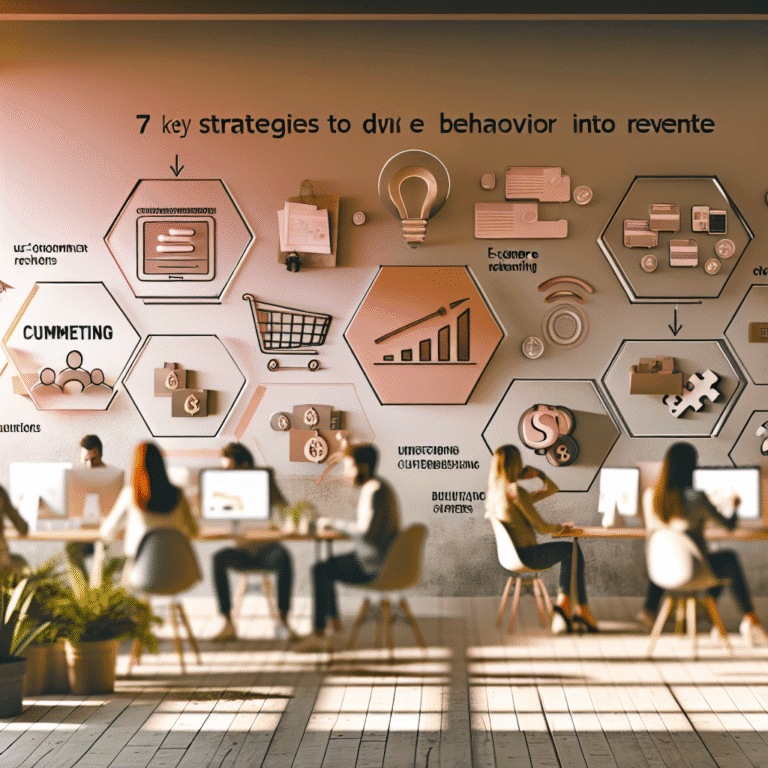The Secret Sauce for Boosting Ecommerce Conversions
Picture this: everything on your online shop works perfectly. Your ads are top-notch, your images are clearer than a cloudless sky, and your checkout process is as smooth as butter on a hot crumpet. Still, those pesky conversion rates stay unimpressive.
It’s a bit like throwing a fabulous party and having guests hang around just near the snacks, sipping wine, but never quite joining the fun at the table.
Nothing looks obviously wrong, but something’s holding them back. Sometimes, it’s not the website that’s the problem; it’s the bits and bobs ticking away inside shoppers' heads. People buy on emotions, gut feelings, and those funny little biases they don’t even notice. If you want to boost those conversions, it’s time to think with the human brain — not just the user interface.
Why Psychology Gives Better Results Than Just Good UX
Of course, having a great-looking website helps. Fast-loading pages, simple navigation, and sharp images are the basics. But here's the catch: they’re only the groundwork.
To see real growth in ecommerce, it’s all down to understanding why people buy — the whirlwind of emotions and quick decisions that guide them.
Why’s this important?
- Most issues are hidden — it’s not about the code, it’s about the shopper's mind
- Decisions online are full of shortcuts and biases
- Sales funnels usually don’t outright break — they just fade away in a haze of "maybe some other time"
Take the Baymard Institute's finding of nearly 70% cart abandonment. It’s not dodgy design; it's invisible bumps — doubt, delay, or just a small mental shoulder shrug.
It's emotional gravity, not technical hurdles.
Right, let’s roll up our sleeves and dive into ten proven psychological tricks to spike up conversions. Not guesswork, but science and smarts.
Psychological Magic to Boost Conversions
These aren’t cheap tricks. They’re smart tweaks that fit perfectly with how people decide things when they’re distracted or uncertain.
1. Loss Aversion
Humans feel losses much sharper than gains. Think of it like taking away a pudding and watching everyone's face crumble.
How to use it:
- Say things like “Don’t miss this” or “Your last chance”
- Point out perks or bonuses that are disappearing
- Show what might slip away, not just what’s on offer
Fear of missing out is a pretty strong nudge.
2. Social Proof
Shoppers trust people, not brands. Social proof does the convincing — reviews, testimonials, and real-time data — it screams, “Others did it, so should you.”
Tips to try:
- Show recent customer activity: “Sarah just snagged this in Manchester”
- Highlight trending items: “Today’s most wish-listed”
- Use photos from users not stock ones
Nothing beats people seeing others doing the same thing.
3. Anchoring
The first number out sets the scene, and all choices next relate back to it.
How to set anchors:
- Put original prices next to discounts
- Start with more expensive bundles so other options seem like a deal
- Offer comparisons that make one option sparkle
Anchoring changes how people see value, suddenly everything is relative.
4. Scarcity and Urgency
Scarcity and urgency aren’t about freaking people out; they’re about making the cost of dawdling obvious.
Try these:
- Only 3 left in stock (but be honest)
- Flag sale items with “Going fast!”
- Countdown timers with limited time offers (don’t overdo it)
Proper urgency helps people focus, not panic.
5. Reciprocity
Kindness turns digital carts into shopping baskets. People like reciprocating generosity.
Ways to use it:
- Free shipping on first purchase
- A helpful guide or quiz
- Post-purchase surprises, like a thank-you discount
Being kind upfront gains trust quickly.
6. Commitment and Consistency
Once someone does something small, they’re more likely to go on just to stick with what they’ve done before.
Encourage small actions:
- Ask them to create wishlists or save items by signing up
- Request they set reminders or preferences
- Start with pre-orders — low stakes, big signal
Little yeses remove barriers to big ones, like buying.
7. Lighten Mental Load
Your biggest competitor isn’t another shop — it’s a shopper's brain getting tired. If shopping feels like a chore, they’re out.
Make it as easy as pie:
- Use progress markers at checkout
- Autofill shipping and payment details
- Offer fewer, clearer choices
Easy wins feel smart and encourage more buying.
8. The Paradox of Choice
Too many choices and people freeze. They can’t decide, so they don’t.
Try this instead:
- Curate things like “For Gifts” or “Bestsellers”
- Offer helping filters, not hurdles
- Use guided tools like quizzes
When it’s simple to choose, people are more likely to buy.
9. Authority Bias
Shoppers feel safe with authority, especially when risks feel high.
Play to your strengths:
- “As seen in [well-known outlet]” badges
- High star ratings and lots of reviews
- Expert endorsements
Showing off your credibility is more powerful than claiming it.
10. Smart Defaults
Defaults have clout. People stick with them, not out of laziness but efficiency.
Here’s how:
- Pre-select popular options for quantities or shipping
- Enable "Subscribe & Save" (but in an upfront way)
- Pop in a bundled offer into the cart ready to edit
Being straightforward builds trust.
Small Changes, Big Difference
Stories always tell it best. Take a UK fashion brand that tried a little A/B test. One page had a dull “Add to Cart,” the other had “Only 8 left — more coming soon!” Guess what? That tweak raised the conversions by 46%.
Moral of the story? With integrity, these nudges can nudge conversions without bumping up complaints.
Wrap-up
We often reckon that sprucing up design or offering more discounts will boost those ecommerce numbers. The real truth is, success is about understanding people. And believe me, people are delightfully irrational.
Design with them in mind, starting with small tweaks. Use loss aversion in your product descriptions. Curated collections cut through choice overload. Little kindnesses catch people off guard.
When you quit wrestling with hesitation and start resolving it, sales just seem to follow. Remember, you’re selling to humans. All of them a glorious mix of reason and whim.





